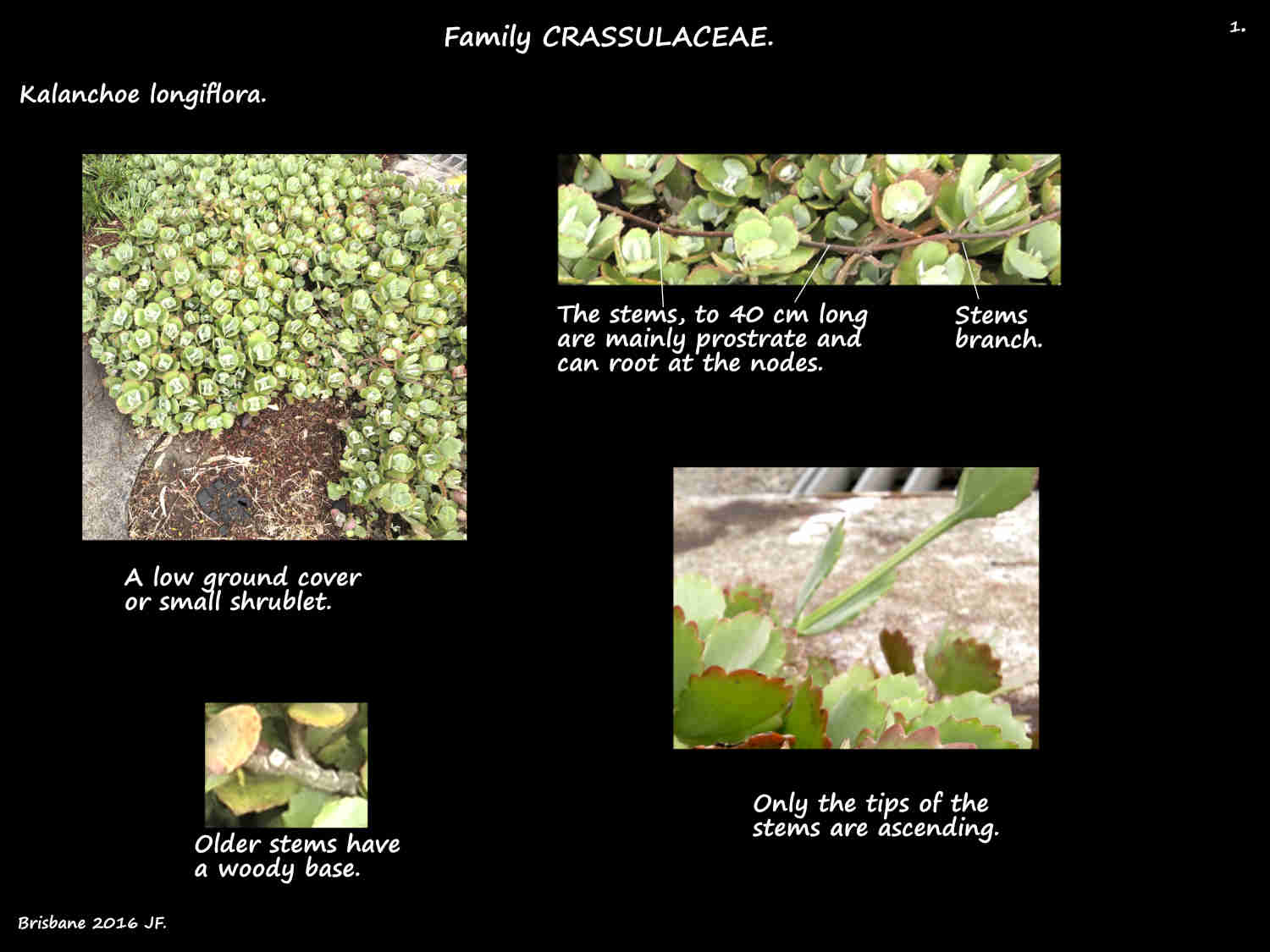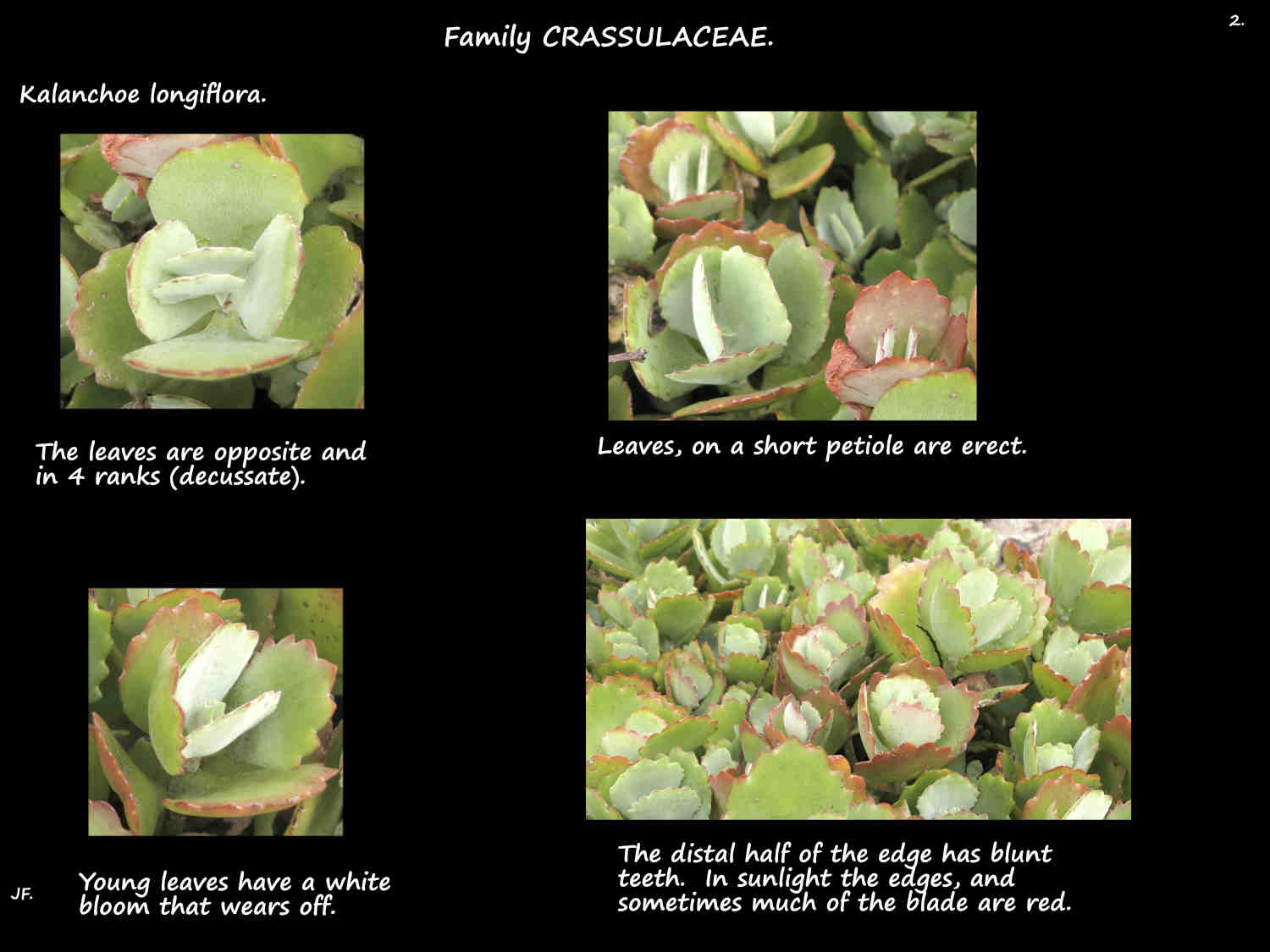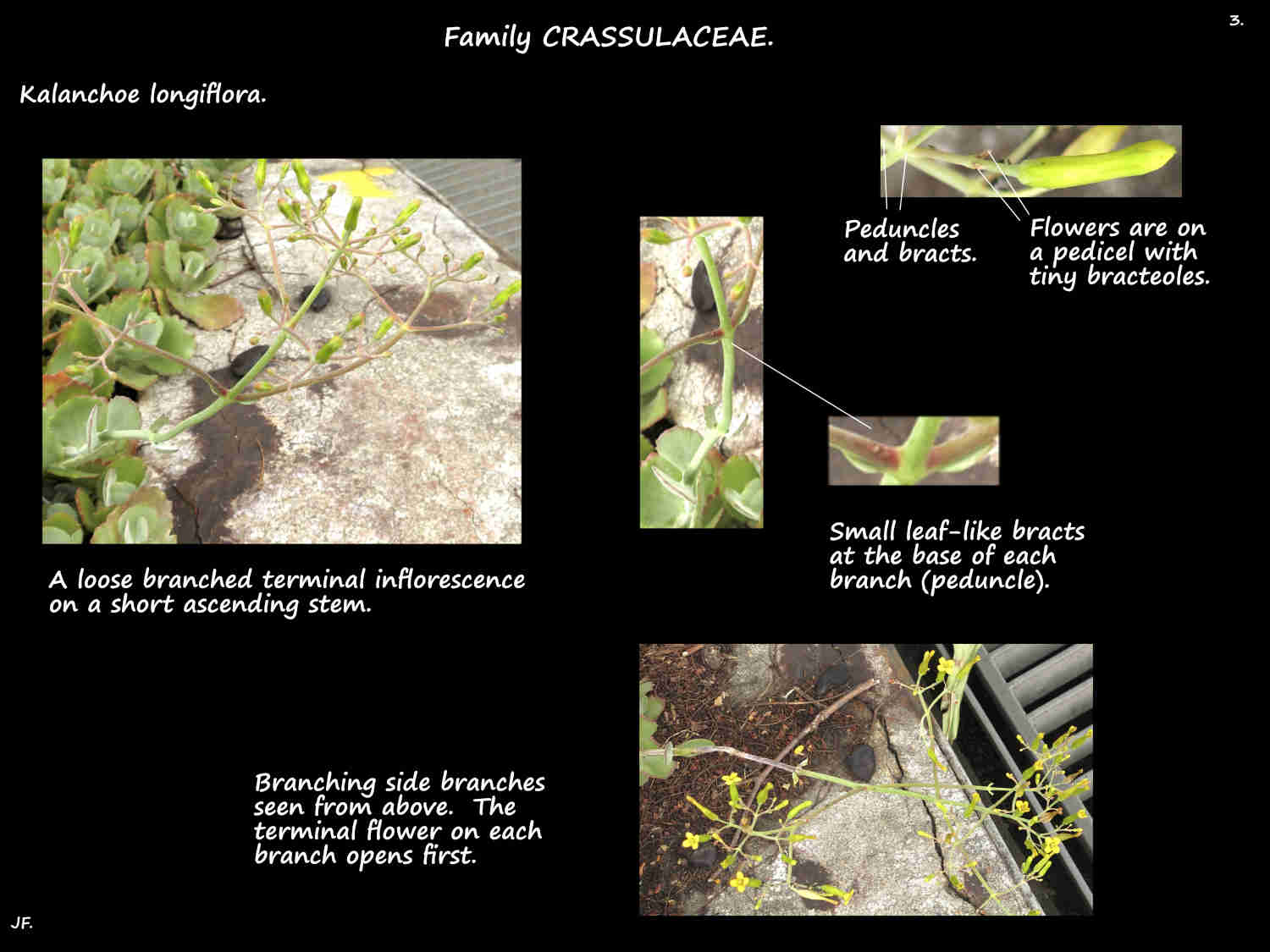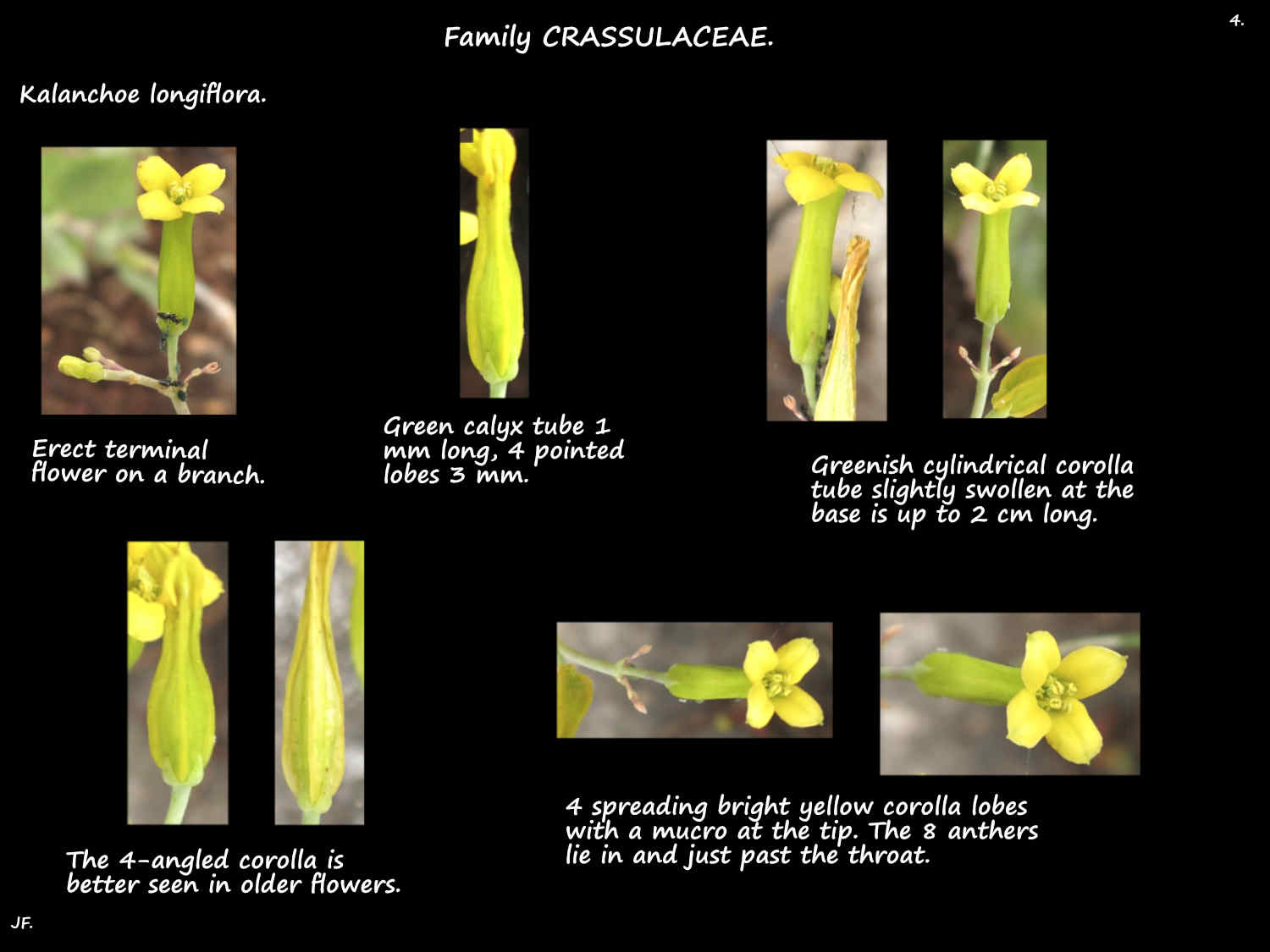Kalanchoe longiflora.
Family Crassulaceae > Subfamily Sedoideae > Tribe Kalanchoeae.
The Long-flower Kalanchoe is from South Africa.
The small succulent plants have stems up to 40 cm long.
The branching stems, with woody bases are 4-angled in cross section.
Most of the stem is prostrate with just the tip erect (ascending).
The opposite and decussate (in 4 ranks) leaves are usually on a short petiole but it can be up to 1.5 cm long.
The base of the petiole clasps the stem.
The obovate to almost circular blade is around 6 (4 – 8) cm long and wide.
The tip can be round or pointed and the base is wedge-shaped.
The edge, from the middle of the blade to the tip has blunt teeth (crenate).
Young leaves are green or bluish-green but the heavy bloom makes them greyish.
The bloom wears off and older leaves are green with a reddish margin.
Depending on the environment the whole blade may be red.
The flowering stems have fewer and progressively smaller leaves.
Branched terminal inflorescences have a main axis that continues to grow.
Side branches have their terminal flower opening first so they do not continue to grow (cymes).
The sparse flowers have a calyx tube around 1 mm long and 4 narrow pointed lobes 3 mm long.
The 4-angled corolla tube, 15 to 20 mm long has 4 narrow spreading triangular lobes.
The greeny-yellow tube is slightly dilated at the base and narrows at the throat.
The yellow lobes have a mucro (small abrupt point) at the tip.
The 8 stamens insert, in 2 whorls onto the corolla tube.
The yellow anthers lie in or just above the throat.
The 4 narrow nectary lobes at the base of the ovary are around 3 mm long.
The ovary, of 4 carpels develops into 4 follicles each with numerous seeds under 1 mm long.
Kalanchoe longiflora ‘Coccinea’.
This cultivar is a similar plant but, depending on the amount of sunlight the flowers can be yellow, orange, red or pink.
J.F.






